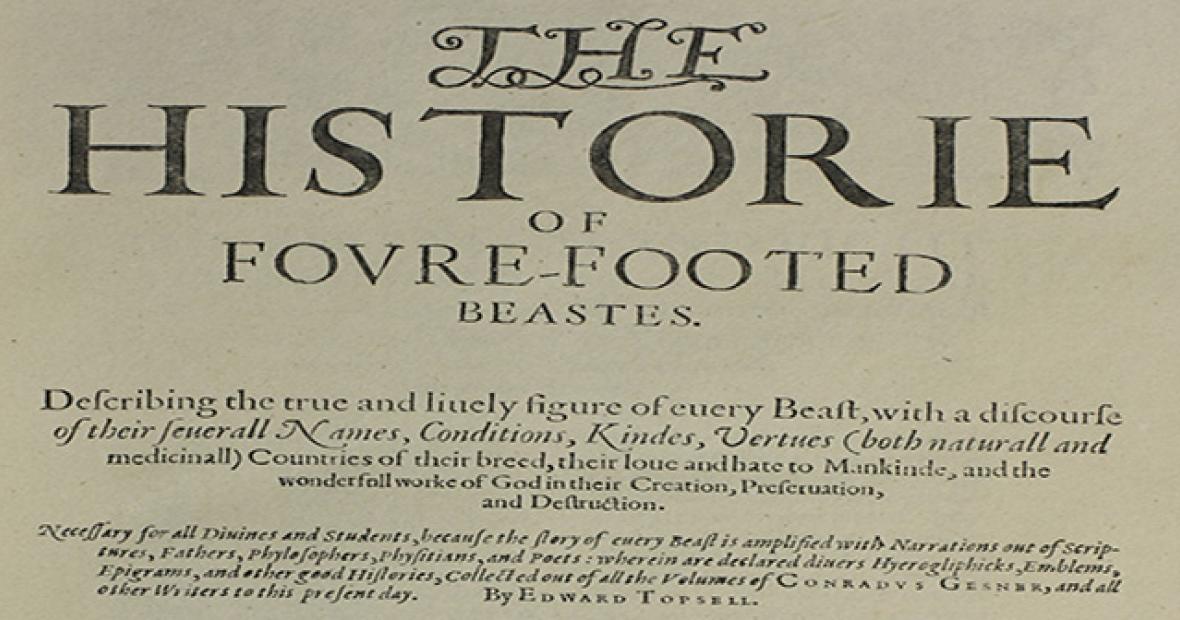The Historie of Foure-Footed Beasts
The Historie of Foure-Footed Beasts, written by Edward Topsell was published in 1607. It was printed by William Jaggard. The lengthy subtitle reads, “Describing the true and liuely figure of euery beast, with a discourse of their seuerall names, conditions, kindes, vertues (both naturall and medicinall) countries of their breed, their loue and hate to mankinde, and the wonderfull worke of God in their creation, preseruation, and destruction."
The Historie of Foure-Footed Beasts contains relevant information for those interested in a variety of disciplines, particularly history, art, and zoology. Looking through this bestiary gives readers a sense of how people of the Elizabethan era understood animals and nature. Readers will notice that along with factual information, Topsell offers some highly incorrect details. He states that weasels give birth through their ears, elephants worship the sun and moon, and that apes fear snails. Furthermore, he writes that the blood of an elephant and the ashes of a weasel are a cure for leprosy.
Topsell was a clergyman in the Church of England rather than a naturalist, so his book draws heavily on the works of others with more knowledge. On the title page, Topsell explicitly acknowledges the publications and work of Conrad Gesner (1516-1565), considered to be the greatest naturalist of his time. All of the animals featured in Foure-footed Beasts were taken from Gesner’s earlier work, Historiae Animalium. He also includes an extensive list of authors who have written about beasts as a guide for readers.
Due to the fact that Topsell borrowed so heavily from other authors and naturalists, The Historie of Foure-Footed Beasts is best known for its illustrations. A variety of illustrators contributed to the work. Among the illustrations are Albrecht Dürer’s well-known woodcut Rhinoceros. While it is clear what animal most of the illustrations represent, a large majority are not strictly accurate depictions. For example, various mice appear very large and possibly vicious.
Foure-footed Beasts lists animals alphabetically, with illustrations and a detailed explanation provided for each animal. Although Topsell largely covered common animals such as goats, weasels, deer, and dogs, he also included animals that would have been unknown or considered exotic to English readers, such as elephants and rhinoceros. Of great interest to modern readers is the fact that Topsell did not confine himself to known animals, but also incorporated mythical animals. The book contains illustrations and explanations of the mythical creatures gorgons, unicorns, and satyrs.
We encourage anyone with an interest to drop by Special Collections and look at this fascinating book in person. Special Collections and Archives is open to the public 1:30-5 p.m. Monday through Friday and mornings by appointment.

